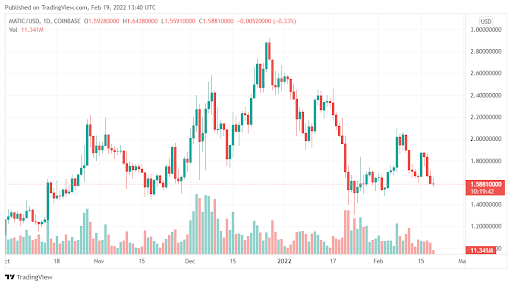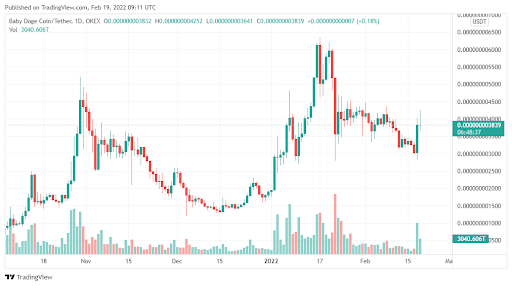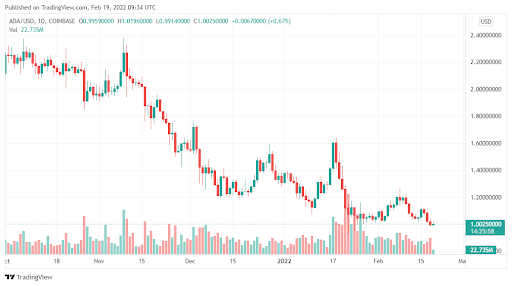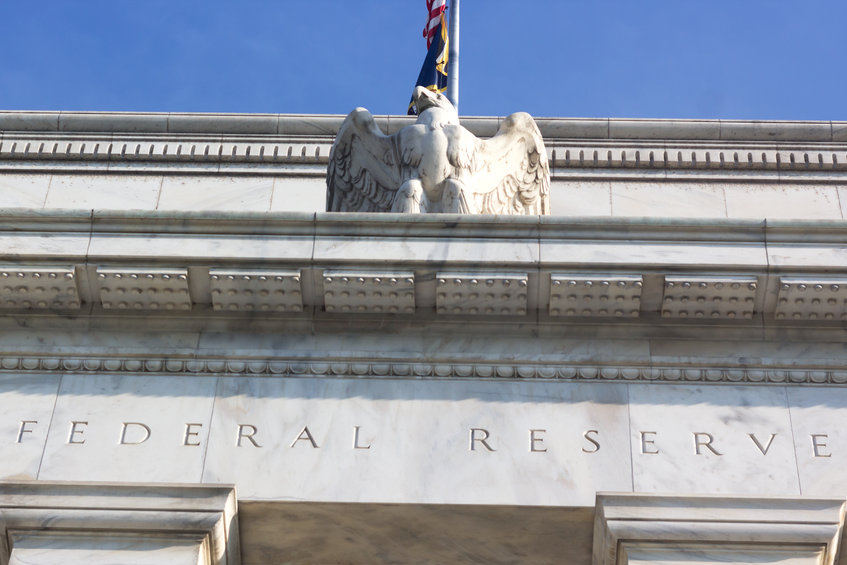
US billionaire and entrepreneur Mark Cuban has remained bullish on Polygon (MATIC) even as the altcoin reported some price weakness in recent days. Cuban believes that in 2022, Polygon will outperform Bitcoin and Ethereum in growth. But despite this, we have seen some bearish trends in MATIC over the last week or so. Here are some highlights:
-
MATIC is currently trading at $1.58, down by about 5% in the last 24 hours.
-
The coin has been on a downward trend in the last week.
-
Price weakness could get worse for Polygon (MATIC) due to the geopolitical crisis in Europe.
 Data Source: Tradingview
Data Source: Tradingview
Polygon (MATIC) – The long-term picture
Investors like Mike Cuban typically look at the long-term prospects of a coin and not the short-term ones. Yes, MATIC has seen some negative price action in recent days. In fact, the coin has actually struggled to cross over the $2 mark and is likely to face further weakness in the coming weeks.
But the long-term fundamentals for Polygon are impeccable. We are also starting to see a lot of institutional money going into MATIC. This is the long-term picture Cuban is talking about.
The billionaire sees Polygon as the most important Ethereum scaling solution with outstanding potential. Also, the 2022 outlook for MATIC is quite positive. Some prediction even shows that MATIC could in fact hit $100 by 2025.
Why you should buy Polygon (MATIC)
As noted above, the fundamentals for Polygon (MATIC) are simply amazing. The project has been making major moves, including building its ecosystem to take advantage of the growing NFT craze and crypto-related gaming.
Polygon has the potential to become as huge as Ethereum. The fact that it is trading at $1.5 is a sure sign that it is time to get in. This coin could blow up very fast in the near future.
The post US Billionaire Mark Cuban remains bullish on Polygon (MATIC) despite recent price weakness – here is why appeared first on Coin Journal.


 Data Source: Tradingview
Data Source: Tradingview 
 Data Source: Tradingview
Data Source: Tradingview
